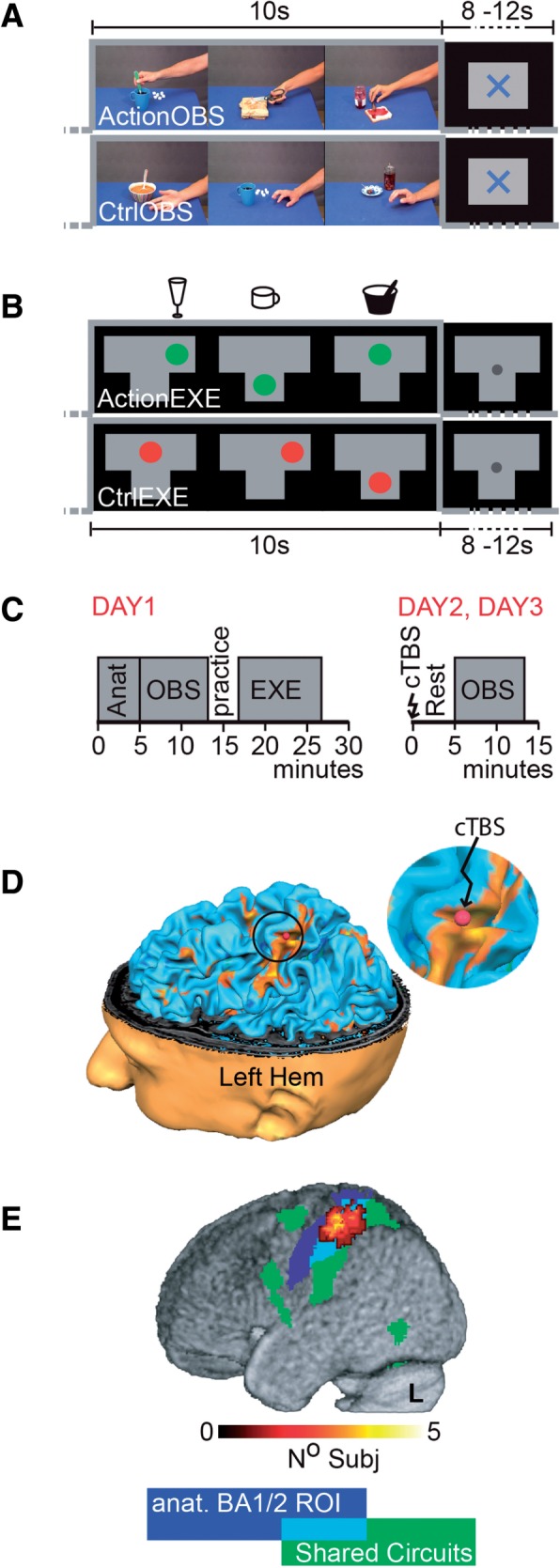Fig. 1.

Experimental stimuli and design. (A) Observation task—timing with example frames of an ActionOBS and CtrlOBS block. All ActionOBS stimuli started with the actor’s right hand entering from the right side of the screen, moving toward an object already present on the table and acting on it. In the CtrlObs videos, the hand moved close to the same objects but did not interact with it. A 8–12 (random) s fixation cross separated blocks of different conditions. (B) Execution task—A spoon in a bowl, a wine glass and a coffee cup (sketches above the timelines) were positioned on three locations of a T-shaped table placed over the participants’ abdomen. During each 10 s block subjects were required to use the spoon as to scoop soup from the bowl, to swirl the wine glass or to grasp the coffee cup, each with their right hand and in randomized order. Instructions were back-projected on a screen (shown in the timeline): a green dot appeared on a drawing of the table, in the location corresponding to the object subjects had to act upon. The circle shrank three times to indicate the action duration (matched to the duration of the ActionObs stimuli). In the CtrlExe subjects had to track the same (although red instead of green) dot movements with their gaze, but without interacting with the objects. (C) Timeline of the three experimental days. (D) Location of the stimulation site (red dot) for one subject as seen on the neuronavigation system. (E) Overlap of the ROIs across subjects, superimposed to the shared circuit map (see also Figure 2A) in green and the anatomically defined left BA1/2 in blue. Shade of warm color shows how many subjects’ ROI included this voxel.
